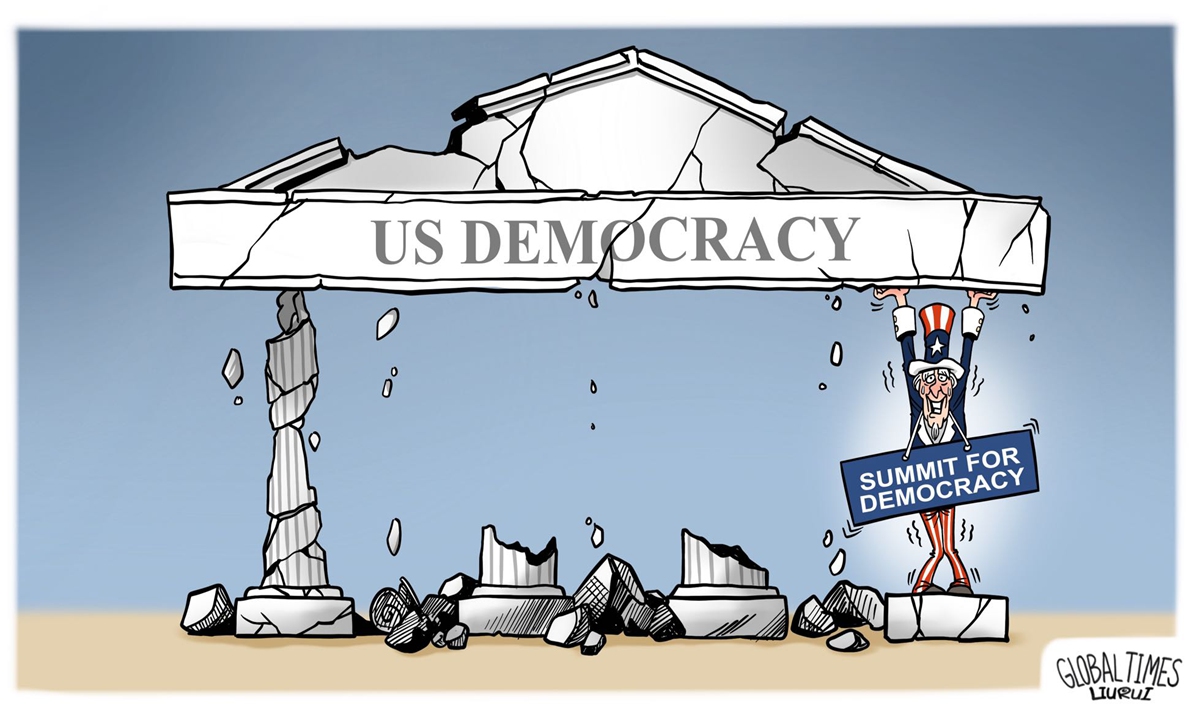Democracy, a system of government in which power is held by the people, has its origins in ancient Greece. Whether democracies are the best form of governance is up for debate. The image above was created by Chinese media. Democracies have challengers, and it’s important to rise to the challenge. Ultimately the best form of governance can be considered on which has the best results, and these results is increasingly being questioned.
With the rise of the internet, and connectivity to people’s homes, and smart phones. There are now new tools available that can make democracies more democratic, and therefore, more effective and it is extremely important to use these tools to improve the democractic systems.
The slow adoption of technology into the systems of democratic governments has been a persistent issue in many countries. Despite the benefits that technology can bring, such as streamlining processes and making them more efficient, many democracies have been slow to embrace new technologies. For example, in many countries, citizens still cannot vote online, which would greatly increase accessibility and convenience. Additionally, many government services and processes could easily be automated, such as the creation of a central government app that would provide access to a range of government services. This lack of adoption of technology can make government processes slower, more cumbersome, and less efficient than they could be. To keep up with the demands of modern society, democracies must continue to adapt and integrate new technologies into their systems.
One of the key advantages of democracy is collective decision-making. The concept of wisdom of crowds posits that large groups of people can collectively make better decisions than individual experts or small groups of decision-makers. The use of tools such as Wikipedia illustrate how the contributions of large groups of people can collaborate and create something far superior, (for free), than a smaller group of people. Betting markets show how collective predictions of a large number of participants can be more accurate than those made by individuals or experts.
However, there is also the concept of mob mentality, which is the tendency for people to follow the actions and beliefs of a group without considering the consequences. Mob mentality can lead to irrational decision-making and even violence, which is why it is crucial to differentiate between the wisdom of crowds and mob mentality.
Another issue with collective decision-making is the concept of design by committee, which involves multiple stakeholders or individuals with different opinions, perspectives, and requirements being involved in making decisions about the design of a product, project, or solution. This approach can result in a final design that is a compromise between many different inputs and may not necessarily reflect a cohesive vision.
Given the power of the wisdom of crowds, we need to harness it and make our democracy more democratic using the tools available to us. For instance, we could open up our National Health Service to doctors, allowing them to vote and provide feedback on systems and proposals. We can also use technology tools to facilitate predictions, brainstorming, problem-solving, and voting.
However, opening up decision-making processes to the public is not without risk. Fraud and third parties using mob mentality to game the system are possible, which is why we need to experiment with smaller projects on a local level before applying it to larger ones. We can create pilots and competitions between systems to see what works and what doesn’t.
Ultimately, it is essential that we experiment with ways to make our governance more efficient, as the effectiveness of our management, decisions, and policies is what makes one country more successful than others. Upgrading our democracy to make it more democratic can make the country more prosperous, people happier, richer, and stronger against external threats. Examples of how this can be achieved are the use of public brainstorming to solve problems, voting in the decision-making process, and the use of technology tools to facilitate collective decision-making. It is time to explore these new tools and apply them to make democracy more democratic and efficient and to protect against other systems that have adopted technology and actually seem to work far better.
